Compressing a fluid which is in gaseous state requires a huge amount of energy,
SO, before compressing the fluid it should be converted into a liquid state. A condenser is used for this purpose, which rejects heat to the surrounding and converts steam into liquid. Ideally, there will not be any pressure change during this heat rejection process,
Since the fluid is free to expand in a condenser. Changes in fluid are shown in the p-v and T-s diagram below.
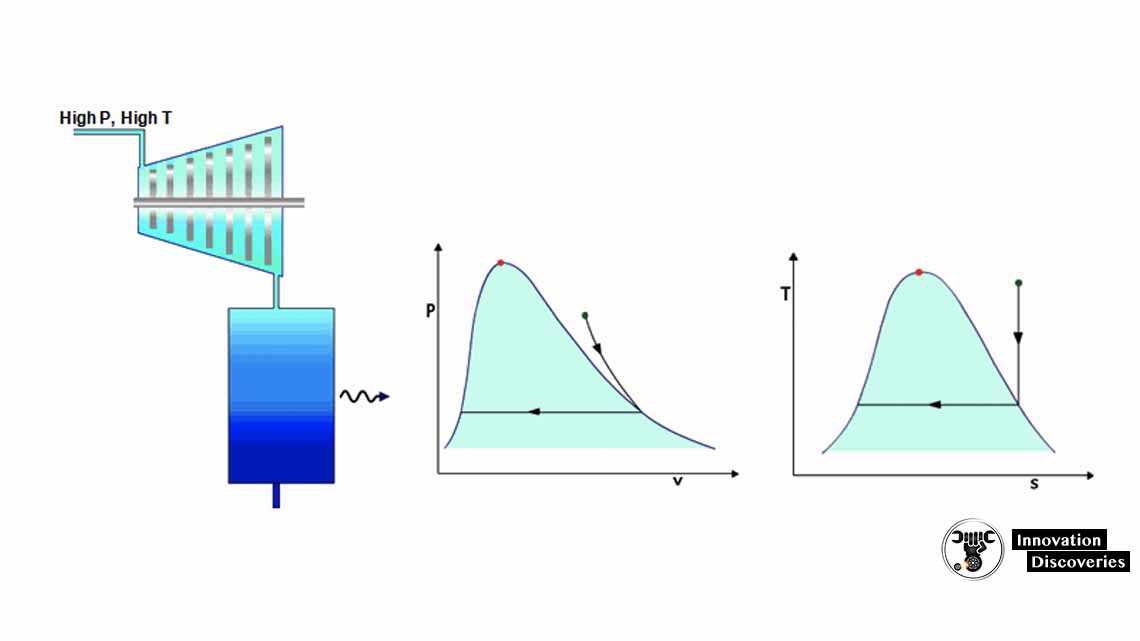
Pump
At the exit of the condenser fluid is in a liquid state,
So, we can use a pump to raise the pressure. During this process, the volume and temperature (2-3 deg. C rise)of fluid hardly changes, since it is in a liquid state. Now the fluid has regained its original pressure.
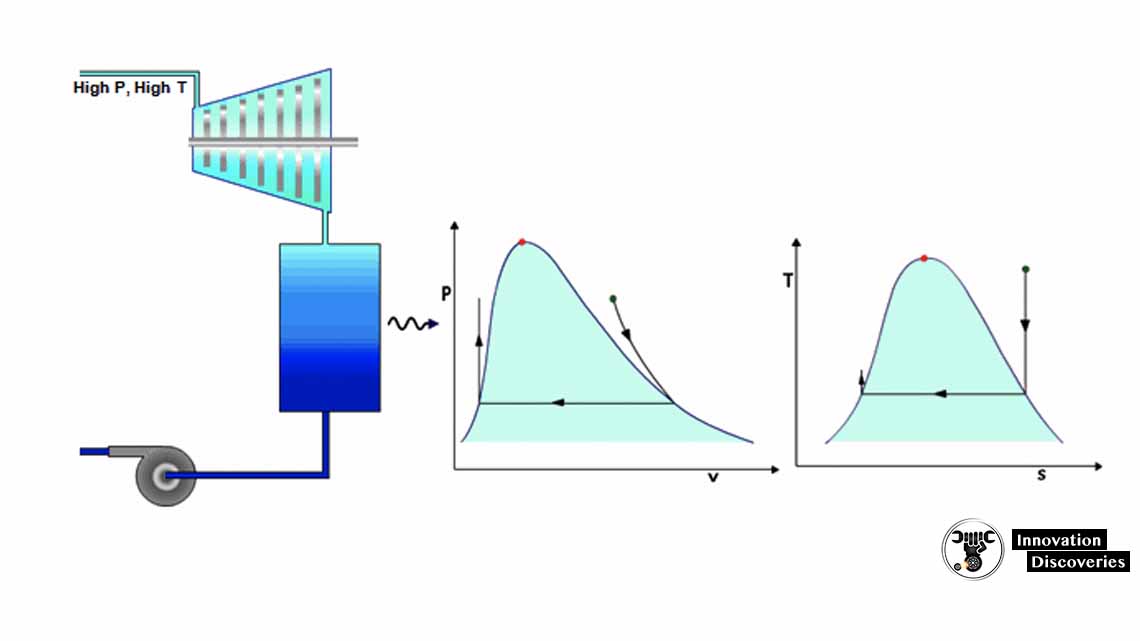
Heat addition in boiler and Rankine cycle
Here external heat is added to the fluid to bring fluid back to its original temperature. This heat is added through a heat exchanger called a boiler. Here the pressure of the fluid remains the same,
Since it is free to expand in heat exchanger tubes. The temperature rises and liquid gets transformed to vapor and regains its original temperature. This completes the thermodynamic cycle of a thermal power plant,
Called the Rankine Cycle. This cycle can be repeated and continuous power production is possible.
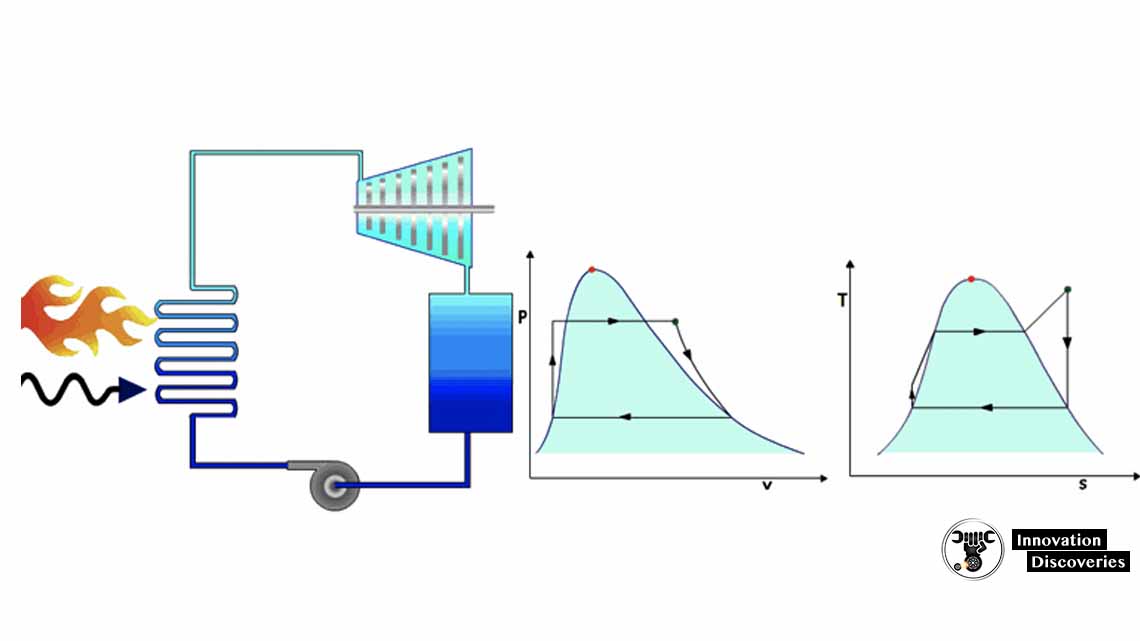
Condenser heat rejection – cooling tower
To reject heat from the condenser a colder liquid should make contact with it. In a thermal power plant, a continuous supply of cold liquid is produced with the help of a cooling tower. Cold fluid from the cooling tower absorbs heat from a condenser and gets heated,
This heat is rejected to the atmosphere via natural convection with the
Help of a cooling tower.
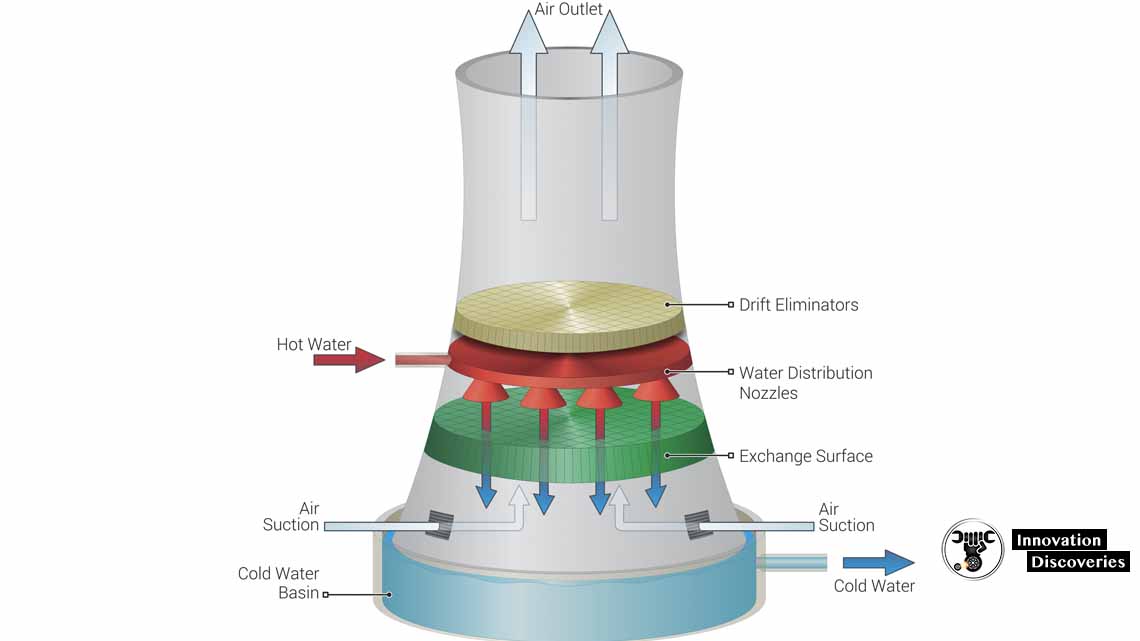
Boiler furnace for heat addition
Heat is added to the boiler with the help of a boiler furnace. Here fuel reacts with air and produces heat. In a thermal power plant, the fuel can be either coal or nuclear.
When coal is used as a fuel it produces a lot of pollutants which have to be removed
Before ejecting to the surroundings. This is done using a series of steps,
The most important of them is an electrostatic precipitator (ESP) which removes ash particles from the exhaust. Now, much cleaner exhaust is ejected into the atmosphere via a stack.
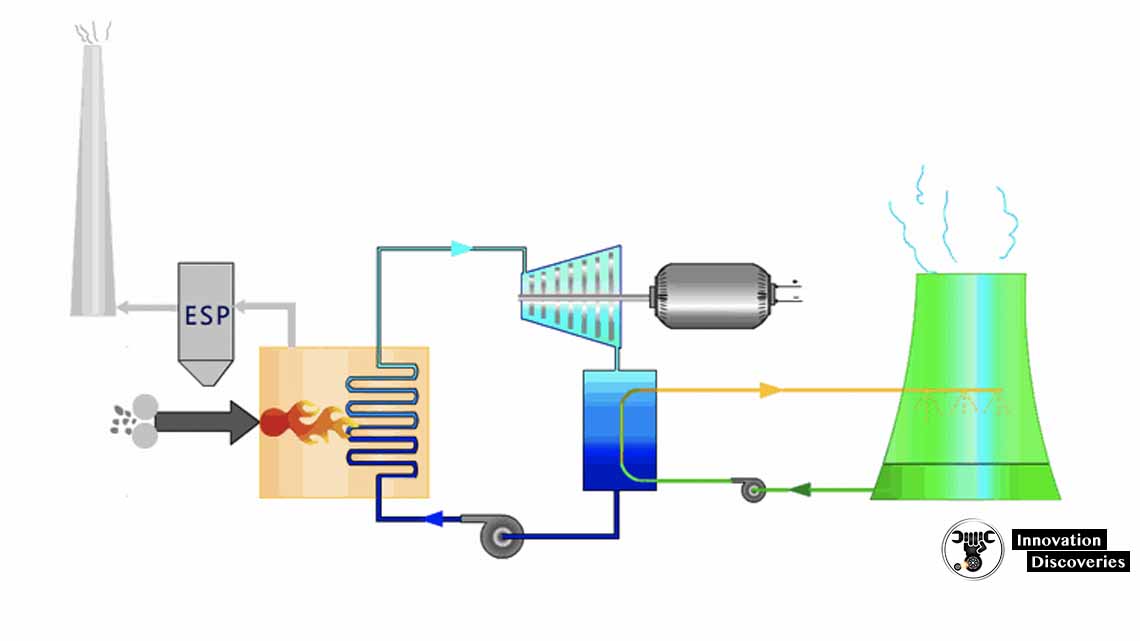
Cooling tower, boiler furnace, ESP and Chimney
NEXT PAGE:
Components of Thermal Power Plant & Working Explanation | lesson 1
Thermal power plant and steam turbine |lesson 2
Optimizing a thermal plant performance | lesson 4
Also, read:
How a Solar Power Plant Works and What Are the Main Types of it?


3 Comments